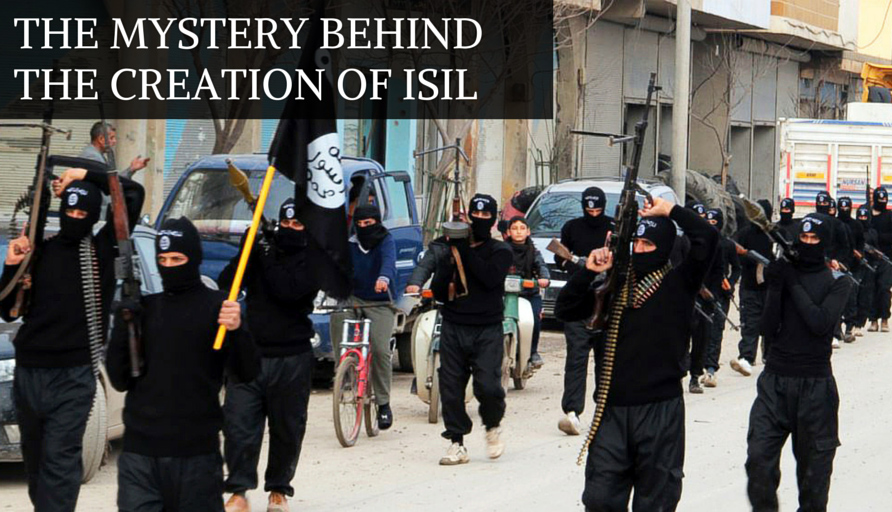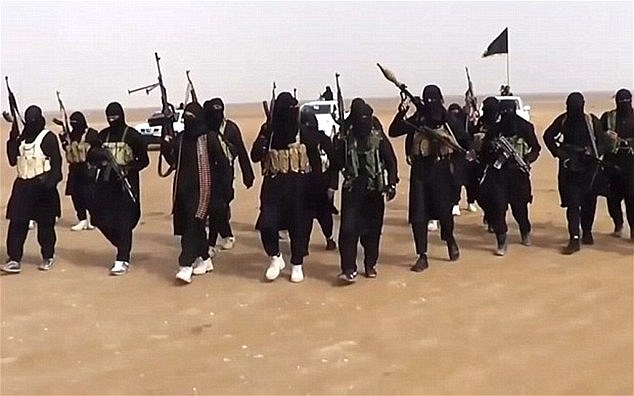The Mystery behind the Creation of ISIL

Many experts on terrorism are confused and eager to solve one puzzling question: What is the real game behind ISIL and who will ultimately benefit from this new conspiracy?
The second more common question asked by Turkish, Iranian, Iraqi, Syrian and Pakistani experts is why most of the former “ISIS terrorists” have a background of U.S. custody or had been arrested by Allied forces and after their release have suddenly emerged as the leaders of so-called “Islamic State” or ISIL.
The ISIL has proved to be most brutal and atrocious organization that has been directly involved in the killing of several hundreds if not thousands of civilians and political rivals, in addition to much publicized throat-slitting of a number of Westerners.
One simple argument to justify their background is that all those suspected terrorists who have suffered worst torture at the hands of American interrogators or their allies were later released due to lack of evidences and they (suspected terrorists) decided to take revenge.
But many experts question that if these terrorists were so capable, far-sighted and had such dangerous plans for future why were they given free-hand to return back to their bases and re-join the most brutal force of radicals.
The second argument is that most of the IS leaders and “Regional/Country Representatives” were either released on purpose or by design to see and check their contacts or perhaps told to work as “valuable and high-paid assets”. If that is the case then these terrorists would not have been sent without any monitoring system that could be easily detected by most advanced drones. If we subscribe to this argument then why U.S. drones could not target them once they joined the IS.
Some sources have confirmed that many of the so-called “extremists” were intentionally released to work as “double agents” so that the CIA can reach the “High-Value Targets”. But after their release and joining IS they turn their back to their new masters and decided to join the opposite side hoping that they could take revenge of what they term ‘inhuman tortures’ at the hands of their captors.

According to some Jordanian officials, dozens of future ISIS members were trained by the U.S. and its regional allies, as part of covert aid to the insurgents targeting the regime of Syrian President Bashar al-Assad in Syria. Although some official claims that the militants (future ISIS members) who received U.S. training were vetted for any links to extremist groups like al-Qaeda, but some experts believe that these insurgents were planted in the country.
The conspiracy theorists even go as far as to claim that the creation of ISIL was designed to mobilize the public opinion against local militants with most brutal assassinations and throat-slitting tactics. According to this argument ISIL was designed to spin off a wave of scare and force many regional countries to withdraw the support for insurgents and militants who opposed foreign occupation.
What is puzzling for area experts is that not only ISIL chief Abu Bakr al Baghdadi but dozen other ISIL leading members in Syria and Iraq have all returned from U.S. prisons or captivity. Furthermore, two important organizers and recruiters of ISIL in Pakistan and Afghanistan have also backgrounds of U.S. imprisonments. Yousuf Salafi, the man who was arrested in Lahore (a city in Pakistan) last month not only maintained contacts with the U.S. based friends and allies but also received financial support from them. Similarly Mullah Abdul Rauf Khadim who was arrested on January 27, 2015 by Afghan Taliban along with his 45 supporters had also return from Guantanamo Bay prison. Mullah Khadim was once close to Mullah Muhammad Omar and arrested for his “role” against foreign forces by the U.S. forces but later released to engage in “farming activities”. The joining of ISIL by all anti-Pakistan TTP leaders has also raised several eye-brows in Islamabad.

Iranian Deputy Foreign Minister Hossein Amir-Abdollahian even went as far as claiming that, “Iran sees no need to cooperate with the US and British governments to fight the terrorists plaguing Iraq that both the US and Britain have helped create.”
In the Middle East, Arab social media theorists often claim that Israeli intelligence, Mossad, had masterminded the establishment of a new alliance of hardliners so that Syria, Iraq, Jordan and Saudi Arabia would be forced to turn their attention on radicals not Israel.
Turkish officials privately argue that the whole scenario was designed to enforce establishment of Kurdistan which would ultimately put together an Israeli-led alliance in their region. Kurdish militants claim that Turkish officials allegedly supporting ISIL for three reasons:
1. Turkey feels threatened by the civil-war in Syria as it has badly affected the Syrian-origin Turks and Alawites in southeastern Turkey (Iskenderun);
2. Turkey is anxious that a civil-war in Syria will ultimately turn into a “Free Kurdistan” backed by the West and Israel.
3. Third and more serious is the fear that Turkey may lose its own territory again southeastern areas (Diyarbakir, Urfa, Mardin, Haqqani, Bitlis ect.) claimed by Kurdish leaders.
There is no doubt that once Kurdistan becomes independent, Israel and Western powers would have a greater say in the region and all neighboring countries Turkey, Iran, Iraq, Syria and Lebanon would face the consequences.
Israeli military support for Kurdish militants are no secret and more recently additional Israeli weapons and military advisors were dispatched during the months of November and December 2014. The presence of Israelis in Kurdistan is not only a cause of concern for Turkey but also for Syria, Iraq and Iran.
Some experts also points out that the U.S. did not support and directly send arms to national military of Iraq, instead they send weapons to the Kurdistan Regional Government. The experts believe that the Kurdistan Regional Government is being militarily armed and supported so that it can break away from Iraq.
While some analysts argue that the US did not directly target Abu Baker Al-Baghdadi’s forces in Iraq. The bombings actually helped drew the boundaries in Iraq and demarcated northern Iraq between the ISIS and Iraqi Kurdistan.
According to recent reports, the ISIS militants have lost only a tiny fraction of the territories they had captured in Iraq since US-led airstrikes began last year. Furthermore, the Pentagon has acknowledged the fact that the U.S. and its regional allies (Iraqi and Kurdish forces) have managed to retake only small percentage of overall territory, and ISIL militants still have the upper hand in the region.
















